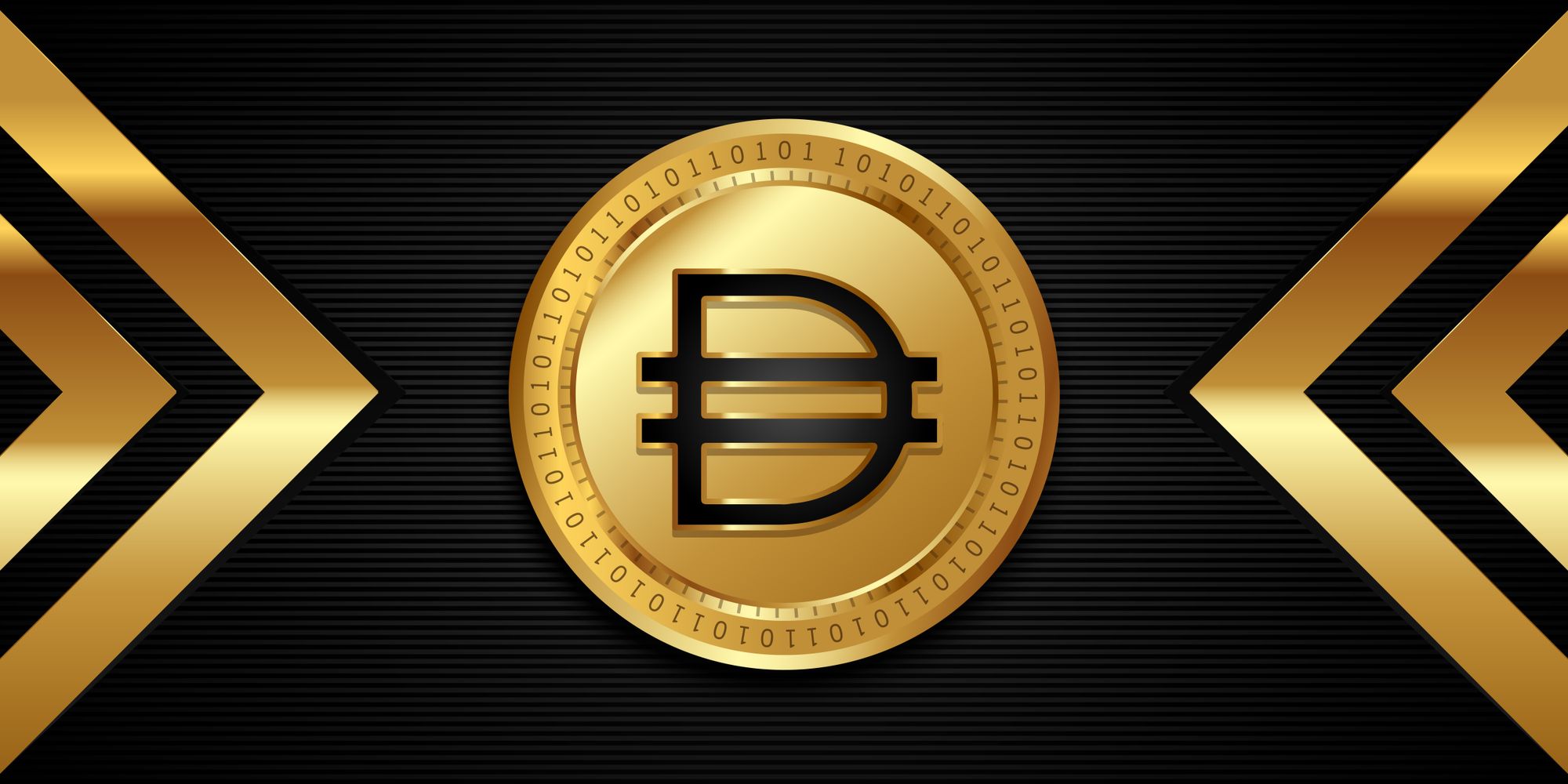What is DAI? Is it an Algorithmic Stablecoin?
The short answer is no; DAI isn’t an algorithmic stablecoin. Algorithmic stablecoins are not backed by any form of collateral; instead, they aim to maintain the dollar peg with a self-sustaining mechanism, as explained above.

Since the unfortunate depegging of Terra Ecosystem’s stablecoin – Terra Dollar (UST), crypto enthusiasts have shown more interest in knowing the working principles that govern their preferred stablecoins.
DAI currently stands in 14th place among all cryptocurrencies by market capitalization, as it is worth over $8.4 billion; although USDT, USDC, and BUSD are well ahead at 3rd, 4th, and 6thplace, respectively, with an average worth of $45 billion, DAI remains one of the strongest stablecoins in the world of DeFi.
What is DAI?
DAI is the first decentralized, collateral-backed cryptocurrency created by MakerDAO that maintains a peg to the dollar with crypto-based collaterals. It is a unique stablecoin that combines the attributes of asset-backed (fiat and commodity-backed) stablecoins and algorithmic stablecoins.
Typically, asset-backed stablecoins like USDT and UDSC are backed by real-world U.S. dollar assets in the form of cash, treasury bonds, fiduciary deposits, etc., and for every USDC/USDT issued, a real-world asset backs them. However, these collaterals are managed by centralized companies, which brought debates on creating decentralized stablecoin options.
Terra USD (UST) was a fully algorithmic stablecoin that worked by automatically burning/mining tokens to create a self-sustaining method of increasing/decreasing the supply of the stablecoin based on the demand. Hence, there is no central issuer or collateralization; instead, smart contracts manage them. So, for example, when UST falls below the dollar, the algorithm burns tokens to reduce the number in circulation, causing automatic scarcity; similarly, when UST rises above the dollar, the algorithm produces more tokens in order to cause a surplus and reduce the price.
DAI is backed by Ethereum, USDC, Wrapped BTC, USDP, and other cryptocurrencies; however, it maintains its peg by collateralized loans denominated in Ether (ETH).
How Does DAI Work?
To get DAI, you can outrightly purchase DAI with ETH tokens or get DAI via a collateralized loan.
Collateralized loans allow a borrower to secure a loan using their existing assets. For example, if you want to borrow some USDT, you can use some of your BTC holdings as a loan; if you are unable to pay, the lender can take control of your BTC assets. In addition, collateralized loans have lower interest rates since something is at stake.
MakerDAO, the issuer of the DAI stablecoin, enables borrowers to generate DAI tokens by locking in ETH and other crypto assets (as collateral); hence, the DAI obtained is similar to a loan. To mint 1 DAI, borrowers are required to lock in the equivalent of $1.70 ETH, and if the borrowers intend to recover their ETH, they will have to return the DAI to the protocol and pay off their interest.
As a result, DAI isn’t typically “issued” by any centralized body; anyone can access the MakerDAO dApp and interact with the protocol. Although, given the amount of DAI tokens in circulation, many users don’t need to go through these processes anymore.
Is DAI an Algorithmic Stablecoin?
The short answer is no; DAI isn’t an algorithmic stablecoin. Algorithmic stablecoins are not backed by any form of collateral; instead, they aim to maintain the dollar peg with a self-sustaining mechanism, as explained above.
To explain further, DAI indeed relies on certain algorithms to maintain its peg, which majorly involves Ethereum smart contracts called Collateralized Debt Positions (CDPs) that helps to manage the exchange of ETH or other tokens for DAI. To get $1 DAI, $1.70 ETH is collateralized; hence, DAI is 70% over-collateralized, which means that DAI will maintain a safe value even if the value of ETH depreciates by 70%. This helps to ensure that DAI maintains its peg, even in cases of severe price falls (which was one of the causes of the UST’s depegging).
Hence, DAI is best regarded as a decentralized collateral-backed stablecoin.
Final Takeaway
MakerDAO, the issuer of DAI, is a decentralized organization with an open-source protocol; hence, unlike USDT and USDC, which are issued by centralized companies, DAI is more secure. However, DAI, having about 42.5% of its collateral in USDC, has raised eyebrows to its level of security. Therefore, questions are asked that, “if USDC reserves get compromised, what will be the fate of the 42% of DAI assets backed by USDC?”
Hence, despite being decentralized, DAI also has its points of worry like every other asset-backed and algorithmic stablecoin,
For more beginner tips, as well as detailed guides on cryptocurrency and blockchain technology, do well to visit the Cwallet Blog and follow our social media communities: